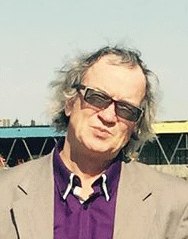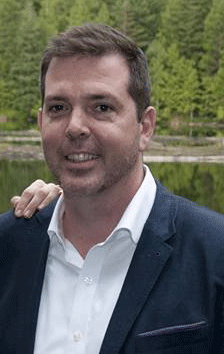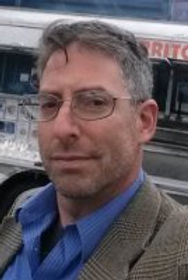
vanadium + energy
Dr. Starosud is a chemical innovator.
Director, PhD Chemistry
Pure Vanadium corp is focussed on bringing the top researchers, institutions, and engineers together to develop pure vanadium electrolyte formulations for the burgeoning energy storage industry. Over USD $20,000,000 has been spent in the development of Vanadium redox flow batteries and electrolytes by our partner, and we own the rights to a substantial portfolio of electrolyte formulations.
Bench Strength
Element #23
Vanadium, named after the Scandinavian goddess of beauty and fertility, Vanadís, is a chemical element with symbol V and atomic number 23. The elemental metal is rarely found in nature, but once isolated artificially, the formation of an oxide layer (passivation) stabilizes the free metal somewhat against further oxidation.
Vanadium occurs naturally in about 65 different minerals and in fossil fuel deposits. It is produced in China and Russia from steel smelter slag; other countries produce it either from the flue dust of heavy oil, or as a byproduct of uranium mining. It is mainly used to produce specialty steel alloys such as high-speed tool steels. The most important industrial vanadium compound, vanadium pentoxide, is used as a catalyst for the production of sulphuric acid.
The first large-scale industrial use of vanadium was in the steel alloy chassis of the Ford Model T, inspired by French race cars. Vanadium steel allowed for reduced weight while simultaneously increasing tensile strength.
The vanadium redox flow battery (VRB) (or Vanadium flow battery) is a type of rechargeable flow battery that employs vanadium ions in different oxidation states to store chemical potential energy. The vanadium redox battery exploits the ability of vanadium to exist in solution in four different oxidation states, and uses this property to make a battery that has just one electroactive element instead of two. For several reasons, including their relatively bulky size, most vanadium batteries are currently used for grid energy storage, such as being attached to power plants or electrical grids.
The main advantages of the vanadium redox battery are that it can offer almost unlimited energy capacity simply by using larger electrolyte storage tanks, it can be left completely discharged for long periods with no ill effects, if the electrolytes are accidentally mixed, the battery suffers no permanent damage, a single state of charge between the two electrolytes avoids the capacity degradation due to a single cell in non-flow batteries, the electrolyte is aqueous and inherently safe and non-flammable, and the generation 3 formulation using a mixed acid solution developed by the Pacific Northwest National Laboratory (PNNL) operates at a high temperature allowing for passive cooling.
VRB
Dr. Alex Starosud
Director & CTO, PhD. Chemist
Dr. Starosud holds a dozen patents and has published over 100 papers. He was given the title of Captain and worked on several strategic technologies during his time in the U.S.S.R. including water flood and fracture-leach processes. His patented process (6736976) for reducing the level of a chemical compound in a fluid is essential for reducing potential electrolyte contaminants.
dr. ted roberts
Advisor, PhD., P.Eng., CEng., FIChemE.
Dr. Edward Roberts is an internationally recognized expert and innovator in the field of electrochemical technology. He is the holder of 22 granted patents, has a further 20 patent applications pending and has published more than 75 papers in international journals.
His work has been recognized through several international awards for innovation (the IChemE Water Innovation Award, the IET Innovation Award and the ACES European Academic Enterprise Award).
mr. dan greenberg
Director & Chief Engineer
Dan specializes in the Integration of environmental technologies with existing COTS systems. This has allowed a range of alternative energy start-ups to achieve the commercial deployment stage. Leveraging his practical manufacturing, development and management experience in the fuel cell, automotive, aerospace and construction industries, Dan brings teams together, focusing on innovative packaging solutions and the deployment of specific commercialization goals.
dr. mirek kraus
Advisor, PhD., Chemical Engineer
Mirek managed the Scientific Institute for the production of Poly- and Copolymers (Acrylonitril butadiene - styrene), Foam and High Impact Polystrol, synthetic Latex and natural rubber, in Kaucuk, Kralupy, Czech Republic. Mirek is an author of multiple technical publications on self developed methods for: Digoxin, Pepsin, Pentobarbital, Prolin, Magnesium etc. in physiological liquids and single dragees. He gained experience in the development and modernization of formulas for cleaning and care products, particularly in the last 20 years in the area of nano-technology.
mr. dusty mckinnon
Director, President & CEO
Dusty specializes in communication and brand development. He has several publications relating to technology development and application, and he has been a speaker, panelist, and presenter at conferences and roundtables with a focus on clean energy and water.
Dusty is a born entrepreneur. His first business (Pure Entertainment) had him featured in BC Business Magazine's Top 100 at the age of 21.
As CEO of Easwara Origins (Sandskrit for water), over the last five years, he developed wastewater recovery technologies that now have applications in electric metals mining.
Connect
Suite 9 14820 Buena Vista Ave, White Rock, BC V4B 0B3
Email: info@purevanadium.com | Tel: 800-805-0241
Pure Vanadium Corp.











